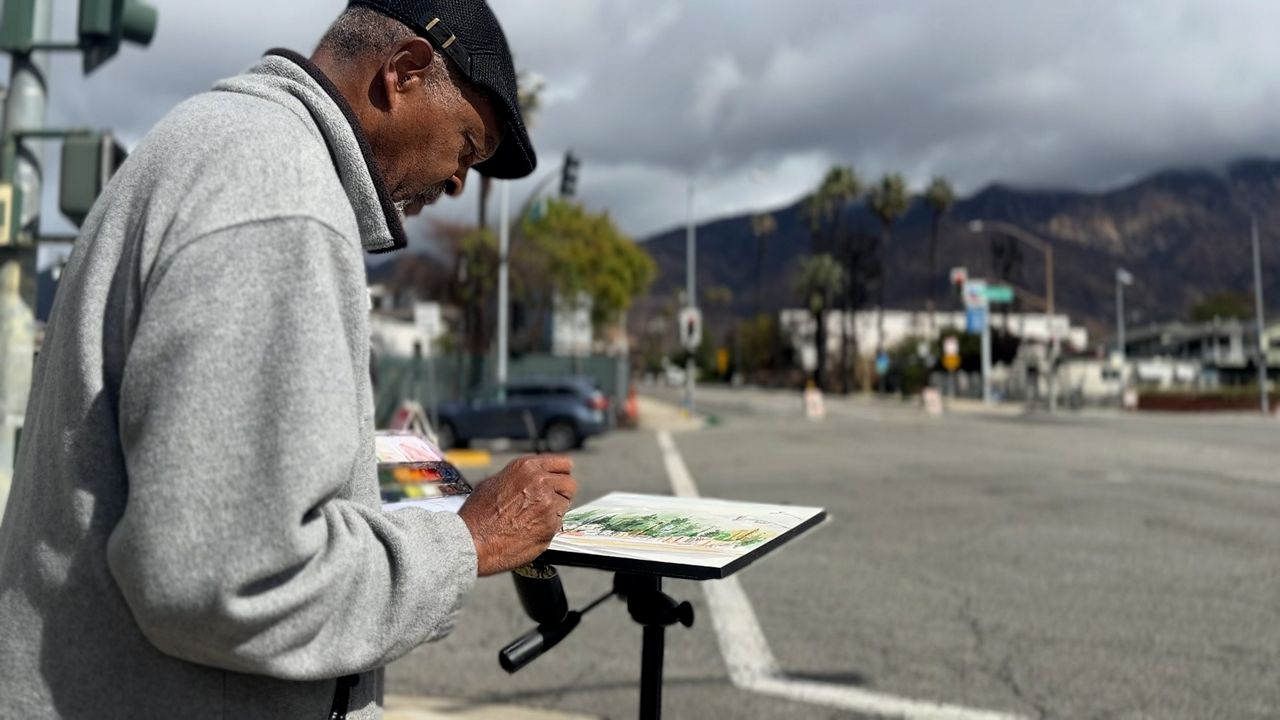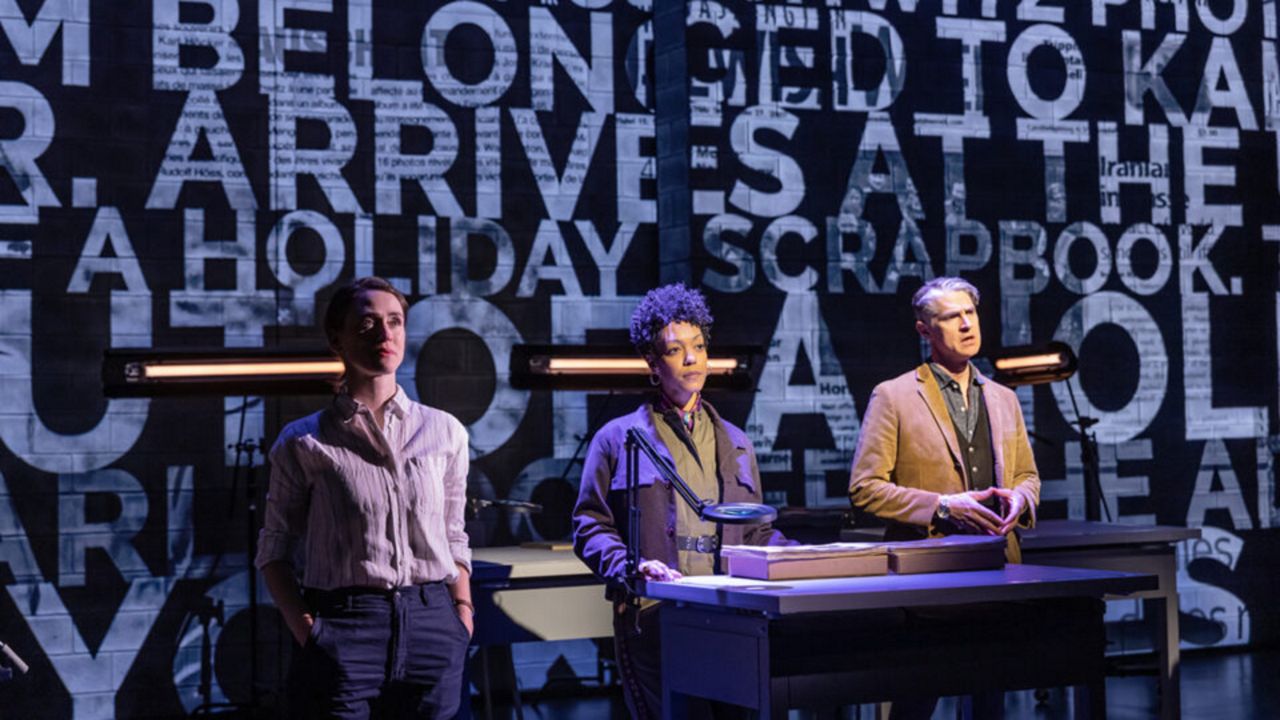LOS ANGELES — Art has a lot to do with perspective and the theatre artists involved in the current production of Sunday in the Park with George at the Pasadena Playhouse recently got a new perspective on the work of Georges Seurat.
“It’s pretty magical,” Graham Phillips said, his face a few inches away from a drawing of poplar trees that dates back to the early 1880s.
Phillips plays the French neoimpressionist who is the subject of Stephen Sondheim’s Pulitzer Prize winning musical — a masterpiece inspired by a masterpiece. In researching the role, Phillips flew to Chicago to see the original painting “A Sunday on La Grande Jatte” but the museum was closed. Through a mixture of luck and tenacity, his predicament reached the right people.
“I got to spend an hour just with me, in the room, listening to the original soundtrack of the Broadway show and just soak it in,” he recalled.
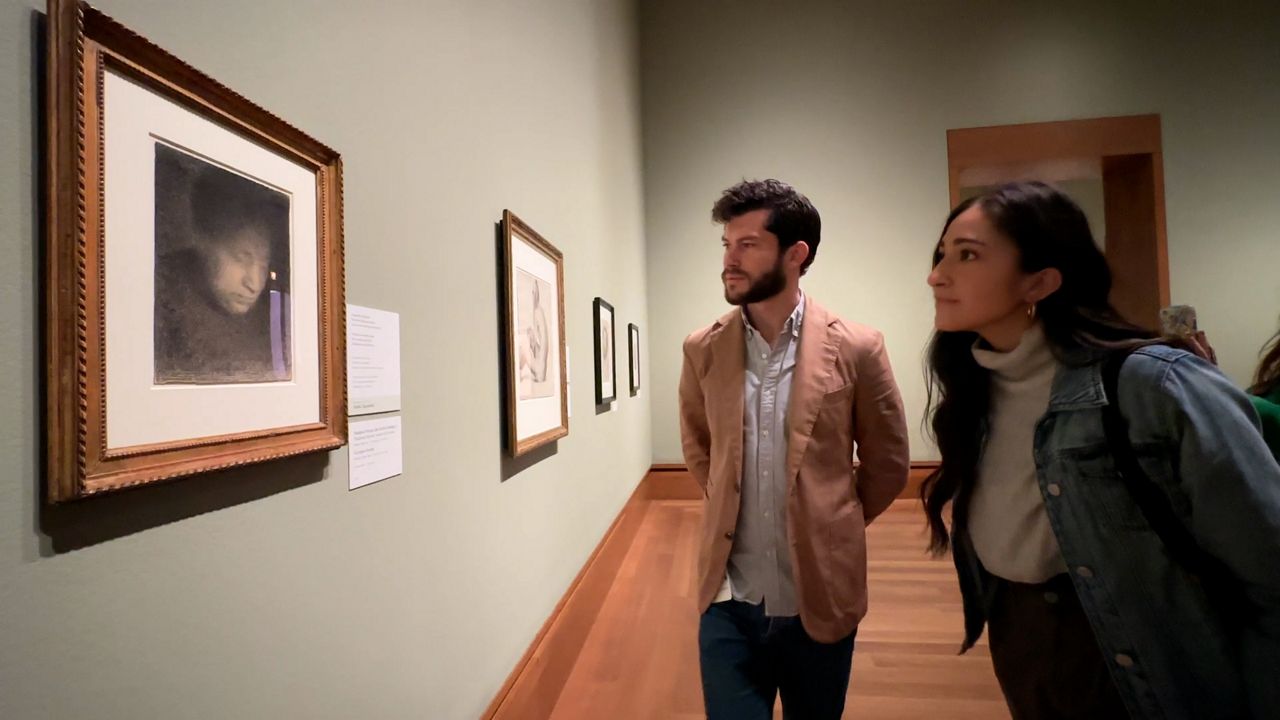
While his character works on the painting, Act 1 finds him in the park, sketching his muse, his mother, passersby and pets. Phillips studied books of Seurat’s drawings, but says seeing them in person at the Getty Center is an entirely different experience.
“You know it has this different, more intense texture and density,” he explained. “The way that the light bounces off the paper, it’s just different than in any reproduction.”
The Getty actually has four drawings by Seurat in its collection, but they’re not on public display. Spectrum News arranged a private field trip to the Drawings Department study room for Phillips, his costar Krystina Alabado and director Sarna Lapine whose uncle James Lapine wrote the book for the musical and directed the original Broadway production.
“It’s pretty incredible,” Alabado said of “Woman Strolling,” which was displayed on a small easel on the table next to “Poplars.” Both drawings are done in conte crayon on Seurat’s favorite paper, the watermark visible through the dark, velvety strokes.
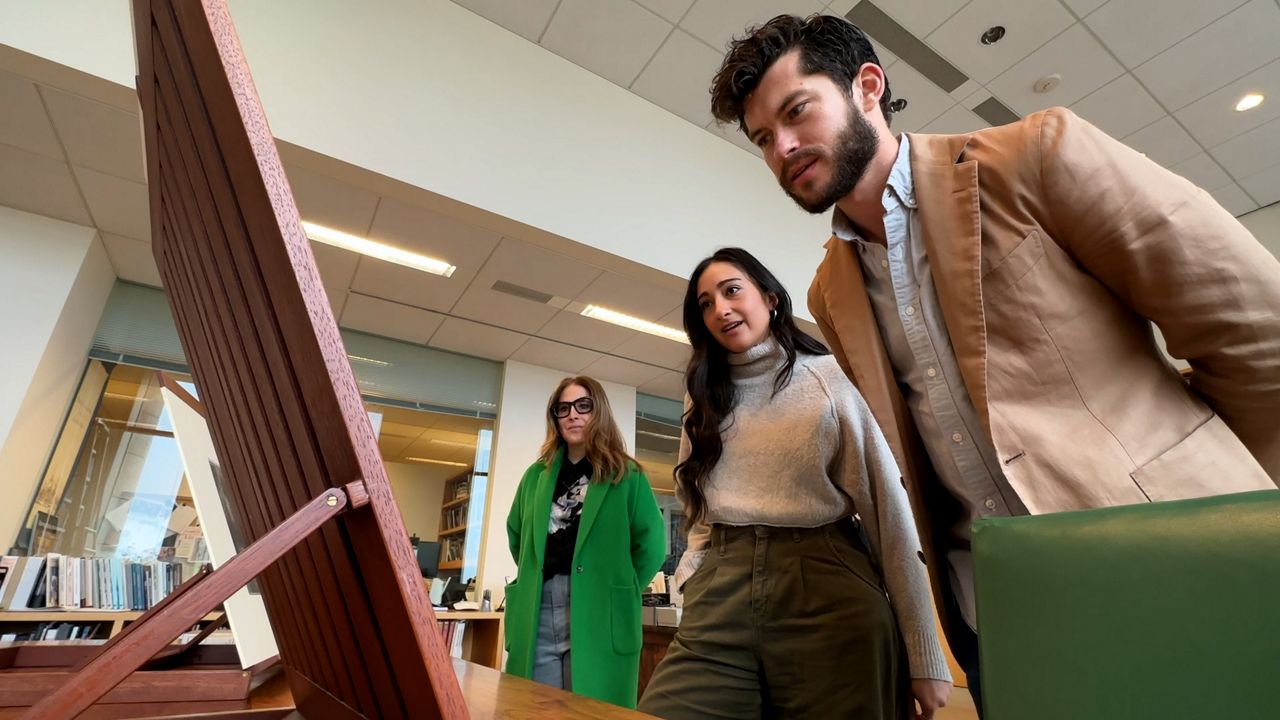
The posture of the woman brings to mind a line from the musical. “Aren’t you proper today, miss?,” George asks his painting as he works. “Your parasol so properly cocked, your bustle so perfectly upright.”
“I love her posture,” Alabado said, thinking of how her own character, Dot, spends the first song standing still, modeling for George in her uncomfortable clothing. “I think a lot about my posture on stage and what it was like to be a woman at that time. And how intense it must have been just as far as clothing.”
The trio got a private art history lesson from Richard Rand, the Associate Director for Collections, who pointed out that while these drawings are not related directly to “A Sunday on La Grande Jatte,” they are fantastic examples of the artist’s craftsmanship.
“They represent the two subjects that he was most interested in,” Rand explained, “the landscape of France, and the people of Paris.”
Seurat may be best remembered for the pointillism style of painting that he developed, but Rand says the artist was also “one of the great drawers in the history of European art.”
“He considered drawing to be an essential activity that was not merely a means to creating a painting but was a form of art that he valued in its own right,” he said. “So drawings like these were not made as studies for paintings, but are independent works of art that he valued equally."
At the moment, one of the museum’s Seurat drawings is on display in a special exhibit curated by interns called “Our Voices, Our Getty: Reflecting on Drawings.” It’s a portrait of Madame Seurat, the artist’s mother who is also a character in the musical that Sarna Lapine considers a modern classic. This is her fourth time directing the piece and her first since the passing of Stephen Sondheim in late 2021.
“Classics teach you the most because they endure over time,” she said. “And when you revisit them at different points in your life, they reflect different things back to you, much like standing in front of an artist’s painting or drawing and giving yourself different vantage points.”
Spending a Thursday at the Getty with Seurat was informative and eye opening and Alabado expects seeing the intimate black and white drawings will color her performance.
“Just to be able to be here with these original sketches,” she said, “tonight on stage, it’s going to be feel different, knowing that we were able to experience a piece of him in this room.”
In Act 2, Phillips, now playing an artist names George, who may be a direct descendent of Seurat, sings “See George attempting to make a connection.” Looking at the drawings, that line takes on new weight.
“I have to believe that there’s a part of him that wanted to connect to these people and loved being out in the park,” Phillip said. “It’s very clear that he was aware of how objects interacted in such a beautiful way that I think will be really fun to bring to the stage tonight.”
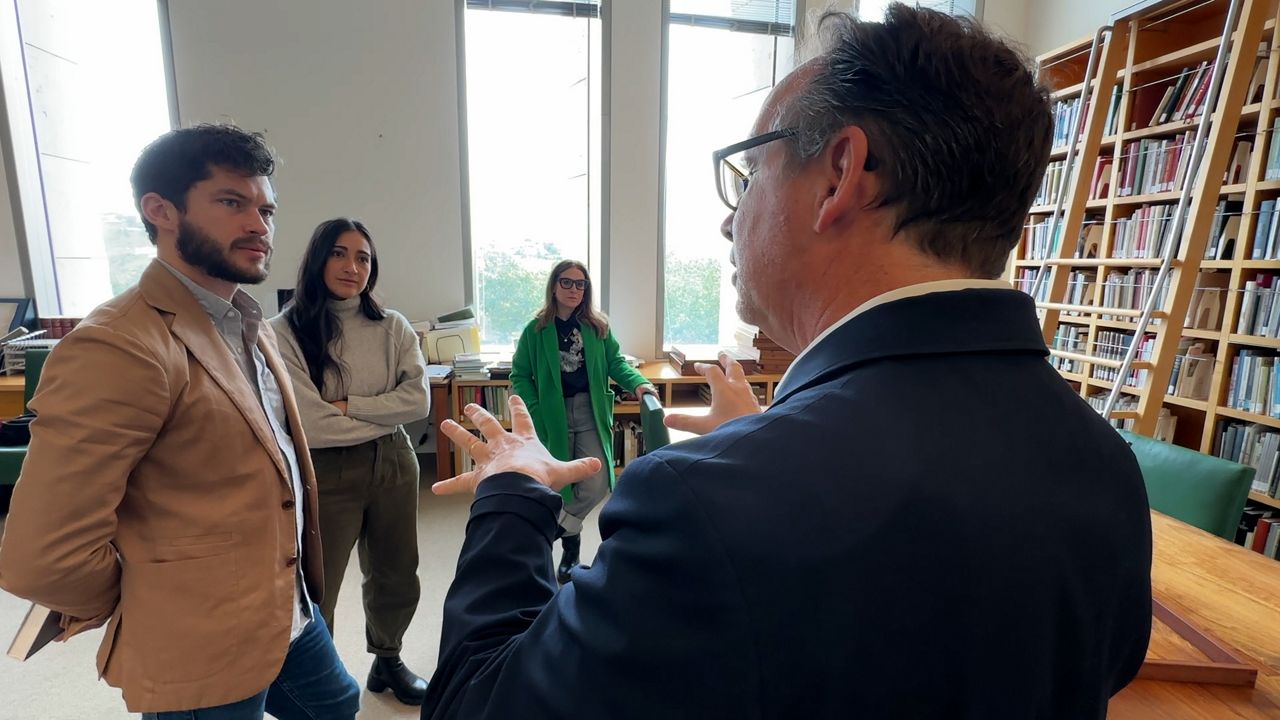
Rand stresses that none of the works owned by the Getty are part of a “private” collection that is off limits to public eyes. To see drawings that are not on permanent display, visitors can fill out an application to request an appointment.
The portrait of Madame Seurat will be on view at the Getty through April 30. Sunday in the Park with George runs at the Playhouse through March 19th as part of their six-month Sondheim celebration.









)
